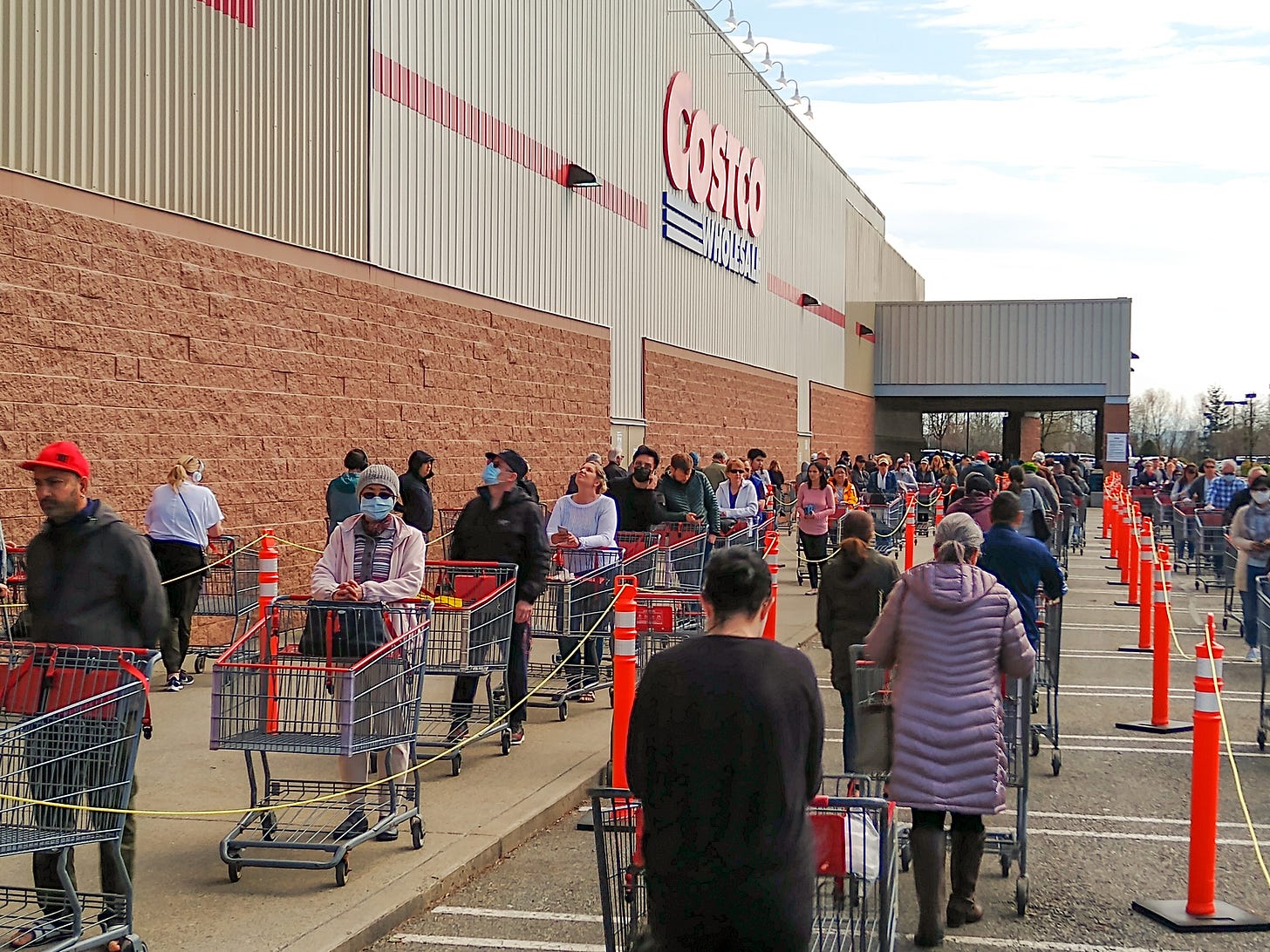We Need To Get Better At Coordination
Clean power is hard to store, so we should learn how to use it when it's available
It’s an exciting time to be following developments in clean technology. There are plans for oversized water heaters that can prepare an entire day’s hot water whenever electricity is cheapest, “district thermal” systems that warm one building using waste heat from another, and school districts earning extra money by using their electric buses to help feed the grid during late-afternoon peak usage.
However, each of these examples will require coordination between groups that don’t traditionally work together. For instance, my water heater will need to know when the utility has power to spare. We can have more nice things, at lower cost, with less impact on everything from climate to air quality to geopolitics, than ever before. But we won’t get there unless we can become much better at coordination.
Fossil Fuels Stockpile Easily, So We’re Used To Doing Our Own Thing
Historically, we haven’t needed much coordination of energy usage. The local gas station is happy for me to fill my tank whenever I like. No one has ever proposed “time-of-use pricing” for natural gas. With fossil fuels, you use what you want, when you want it.
This is because fossil fuels are easy to store; you basically just dump them into a container. As a result, the system is full of stockpiles. Why can I top off my car on demand? Because the gas station is sitting on a giant tank of gasoline.
Clean power is much harder to store. A typical gas station might hold 30,000 gallons, with an energy content of about a gigawatt-hour. To store that much energy in batteries, at an aggressive battery price of $100 / kWh, would cost (read this in your best Dr. Evil voice) one hundred million dollars1.
With Renewables, Supply and Demand Need to Meet Halfway
Electricity demand fluctuates throughout the day, week, and year. To adjust, the grid has traditionally relied on a combination of “baseload plants” (often coal) that supply steady power 24 hours a day, and “peaker plants” (often natural gas) that can quickly ramp up and down. Existing baseload and peaker plants mostly run on fossil fuels. (Nuclear power also provides a substantial share of baseload, but we’re not building any more of that at the moment. Hopefully that will change.)
The cheapest scalable forms of renewable power – solar and wind – don’t fit into either category; they run on their own schedules. The power is there when it’s there; you can’t control it, or even necessarily predict it. As we increase the share of solar and wind power in the grid, and traditional baseload and peaker plants make up a decreasing share, it will be harder to deliver power whenever it’s wanted.
To provide power on demand, we’ll need a combination of storage (e.g. batteries) and “clean firm” sources such as nuclear or geothermal2. This is doable. It’s even pretty economical, up to a point: we can easily provide some on-demand electricity. Using solar power to charge batteries during the day will be reasonably cost-effective if you can count on selling power every night to pay off the cost of the batteries. And baseload sources work well if you can sell their power 24 hours a day.
What we won’t be able to do economically is meet all the demand, on demand, all the time. A solar-and-battery system that’s robust enough to provide power through the shortest night of the year, will be underutilized the rest of the year. Similarly for a system that can meet peak late-afternoon air conditioning demands on the hottest day of the year. The California grid struggles with that today; when we get rid of gas-fired peaker plants, the challenge will be much greater.
The solution is to shift some of the demand. On a hot July afternoon, I really want to run my AC, but I probably don’t need to recharge my car right then. Many other applications, ranging from household use to industrial processes, can shift as well. And flexible electricity users, by waiting until power is plentiful, will be able to take advantage of extremely low rates: everyone wins.
Meeting Halfway Requires Coordination
If we’re going to match demand to supply, electricity consumers and suppliers will need to coordinate. My water heater will need to be told when to run; my EV will need to be told when to charge. The utility will need to supply that information.
In fact, information will need to flow in both directions. To manage capacity, the utility needs to be able to predict usage. It will need to know how much electricity my water heater and EV are using, whether they are prepared to switch off on request, and for how long. This will require two-way communication with hundreds of millions of devices in the state of California alone.
We’ll have to work out price incentives to make this worthwhile for everyone – from homeowners to large industrial facilities. We’ll have to design protocols, devices, and infrastructure (“smart grids” and “smart electric panels”) to make it all work. We’ll have to educate consumers that if they’re planning a long drive at an unusual time, they should instruct their car to charge early. Basically, everyone and everyone is going to have to get with a new program.
The More Sophisticated We Get, The More Coordination We’ll Need
So far, I’ve just been talking about the basics. There is endless room to optimize the green economy by mixing and matching pieces in increasingly sophisticated ways.
For instance, district thermal systems circulate heated fluid between buildings. This can be used to keep buildings warm, and for industrial applications. The input is waste heat from facilities such as electricity plants or data centers, supplemented by heat pumps when necessary. Some systems can even provide a mix of heating and cooling; for instance, an industrial facility might use a heat pump to provide process heat; that will chill the fluid loop, which can then be used to cool a home.
District thermal systems have the potential to provide dramatic energy and cost efficiencies, but they require a whole new level of coordination. A substantial portion of buildings in a given area would need to convert at the same time – somewhat like converting a neighborhood from individual septic fields to a shared sewer line. In operation, the system would need to balance the heat dumped into the system by my air conditioner against the heat pulled out by the ovens at the local bakery.
Doing All This Requires Rules That Allow Us To Do All This
All of this coordination takes place between entities that are regulated in various ways. Utilities, grid operators, electric plants obviously. Residential and commercial buildings are subject to building codes, appliances are subject to energy efficiency standards. And all of the interactions between these parties are based on regulated energy rate plans and tariff structures.
I mentioned the example of a school offsetting the cost of an electric bus by using the battery to feed the grid at times when the bus isn’t needed. Is a school district even allowed to do that? How do they contract with the utility? Under what rules would they be compensated? What if the bus routes change and they’re no longer able to uphold the contract?
We’ll need to update rules, codes, regulations, and accepted practices to allow traditionally separate systems to connect. These regulations come from distinct regulatory bodies that are not used to working together. When you consider how much trouble we’ve had just setting net metering rates, it’s clear that this is going to be a challenge.
We’re Going To Need Nimble Decision Making
Taking advantage of the possibilities for energy efficiency will require us to coordinate activities in a way we’ve never attempted before. This will involve a lot of learning and invention along the way. There are a lot of great ideas, but we don’t know which ones will work, where they’ll work best, or how to take the most advantage. We’ll be figuring it out as we go.
Traditionally, power consumers do whatever they want, and producers ramp up or down to match. In the future, producers and consumers will engage in an intricate dance, shifting different forms of supply and demand to the times and dates when they are most appropriate.
We talk a lot about the scientific and technical work needed to develop green technologies. To utilize the possibilities will also require changes in how we organize ourselves: social, political, and policy innovation. We need to find ways to educate and incentivize everyone from homeowners to utility regulators to work together in new ways. The payoff will be enormous. It’s time we start figuring out how to get there.
This isn’t a fair comparison; electricity can be used more efficiently than gasoline, and batteries are not the only way of storing clean energy. But even so, clean storage is simply not on the same playing field as fossil fuels.
We might also choose to overbuild solar and wind, as prices continue to decrease. If we build twice as much solar capacity as we’d normally need, then we’ll have enough capacity even when cloud cover shaves off 50%. This isn’t a complete solution – sometimes the sky is entirely dark and windless – but it can take some of the pressure off of storage and clean-firm sources.



